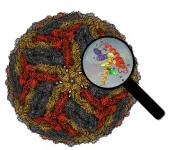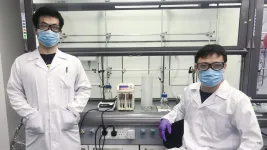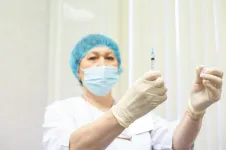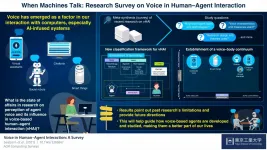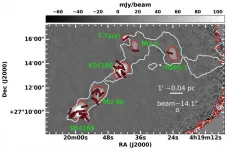Why moms take risks to protect their infants
2021-06-01
(Press-News.org) It might seem like a given that mothers take extra risks to protect their children, but have you ever wondered why? A new study led by Kumi Kuroda at the RIKEN Center for Brain Science (CBS) in Japan shows that in mice, this and other nurturing behaviors are driven in part by neurons in a small part of the forebrain that contain a protein called the calcitonin receptor. The study was published in Cell Reports.
Many simple behaviors, such as eating and drinking, are driven by different parts of the brain's hypothalamus. The new study focused on identifying the part that drives a much more complicated behavior: caring for infants. As Kuroda explains, "we were able to narrow down the brain cells necessary for parental and non-parental care in mice to a subset of neurons in the central MPOA region that contain the calcitonin receptor."
The team's previous research pointed to the central MPOA (cMPOA) region of the hypothalamus as the hub of nurturing behavior. This part of the brain contains more than seven different kinds of neurons, and the goal of the new study was to find a marker for the ones which are the most important for nurturing. The researchers visualized 20 candidate genes in the cMPOA of nurturing mice together with a marker for active neurons. Double labeling was highest for the calcitonin receptor gene, making it the most likely marker for nurturing-related neurons.
Next, the researchers examined these neurons in detail. There were three major findings. First, the number of cMPOA neurons with the calcitonin receptor was higher in post-partum mothers than in virgin females, males, or fathers. Second, incoming and outgoing connections to these neurons from other parts of the brain changed in females after they gave birth. Third, silencing these neurons completely disrupted nurturing behavior. Nurturing behaviors in mice include nest building, hovering over pups in the nest, and picking pups up and bringing them back to the nest -- termed pup retrieval. After the critical neurons were silenced, virgin females left pups scattered around the cage, even after mating and birthing their own pups. Other behaviors such as nursing and nest building were also affected, and the mothers acted overall as if they had little motivation for nurturing behavior. As a result, many pups could not survive without intervention.
After establishing that cMPOA neurons expressing the calcitonin receptor are necessary for nurturing, the researchers hypothesized that the receptor itself has a special function in generating the enhanced motivation for nurturing observed in mothers. To test this hypothesis, the team devised a new pup retrieval test. Instead of placing the pups around the edges of their home cage, they placed them on an elevated maze. Being out in the arms of the elevated maze is a little unpleasant and scary for mice. Virgin females that would retrieve pups in the cage refused to do it in the elevated maze. In contrast, mother mice always retrieved the pups, showing that their drive to nurture was greater. However, when calcitonin receptor levels were reduced by about half, even mother mice hesitated and took much longer to complete the retrievals.
"Parents, both human and animal, must choose to sacrifice one behavior for another in order to care for their children," says Kuroda. "We found that upregulation of the calcitonin receptor is like a push in the brain that motivates mice to care for their pups, suppressing their self-interest and tendency to avoid risky and unpleasant situations."
"The next step is to examine calcitonin receptor-expressing cMPOA neuron's role in the nurturing behavior of non-human primates, which should be more similar to what happens in humans."
INFORMATION:
Reference: Yoshihara et al. (2021) Calcitonin receptor signaling in the medial preoptic area enables risk-taking maternal care. Cell Rep. doi: 10.1016/j.celrep.2021.109204
ELSE PRESS RELEASES FROM THIS DATE:
2021-06-01
Most prescriptions for the drug buprenorphine, used to treat opioid use disorder, are written by a small number of the health care providers, according to a new RAND Corporation study.
Published in the June 1 edition of the Journal of the American Medical Association, the study found that half of all patient-months of buprenorphine treatment during 2016 and 2017 were prescribed by just 4.9% of the physicians and other providers who prescribed the drug during the period.
"These findings have important implications for efforts to increase buprenorphine access," said Dr. Bradley D. Stein, the study's lead author and a senior physician researcher at RAND, a nonprofit research organization. "Our study suggests that targeted efforts to encourage more current prescribers to become high-volume ...
2021-06-01
In a recent study, Australian scientists used an original approach to resolve the 3D structure of flaviviruses with an unprecedented level of detail, identifying small molecules known as 'pocket factors' as new therapeutic targets.
Flaviviruses infect humans by mosquito or tick bite, with symptoms ranging from fever and myalgia to life-threatening neurological and congenital conditions. Flaviviruses such as dengue, yellow fever and Zika threaten almost a third of the world's population, and new flaviviruses emerge regularly from animal reservoirs with the potential to cause epidemics. ...
2021-06-01
A research team led by scientists at Université de Montréal has developed a unique observational tool for assessing children up to 5 years of age who have had a concussion. The work is explained in a study published in the Journal of Head Trauma Rehabilitation.
Pediatric traumatic brain injury (TBI) is particularly prevalent in toddlers; they're more likely to be injured because they have a lower sense of danger and are still developing physically. But parents and clinicians have trouble detecting symptoms of trauma, given the toddler's limited verbal skills.
"A young child will not tell you that they have a headache or feel dizzy," said Dominique Dupont, an UdeM postdoctoral student in neuropsychology and first author of the study.
"But assessing post-concussion symptoms ...
2021-06-01
PHILADELPHIA--An odor-based test that sniffs out vapors emanating from blood samples was able to distinguish between benign and pancreatic and ovarian cancer cells with up to 95 percent accuracy, according to a new study from researchers at the University of Pennsylvania and Penn's Perelman School of Medicine.
The findings suggest that the Penn-developed tool -- which uses artificial intelligence and machine learning to decipher the mixture of volatile organic compounds (VOCs) emitting off cells in blood plasma samples -- could serve as a non-invasive approach ...
2021-06-01
Our lives today are governed by electronics in all shapes and forms. Electronics, in turn, are governed by their batteries. However, the traditional lithium-ion batteries (LIBs), that are widely used in electronic devices, are falling out of favor because researchers are beginning to view lithium metal batteries (LMBs) as a superior alternative due to their remarkably high energy density that exceeds LIBs by an order of magnitude! The key difference lies in the choice of anode material: LIBs use graphite, whereas LMBs use lithium metal.
Such a choice, however, comes with its own challenges. Among the most prominent ones is the formation ...
2021-06-01
Singapore, 1 June 2021 - The discovery and development of new small-molecule compounds for therapeutic use involves a huge investment of time, effort and resources. Giving a new spin to conventional chemical synthesis, a team of researchers from the National University of Singapore (NUS) has developed a way to automate the production of small molecules suitable for pharmaceutical use. The method can potentially be used for molecules that are typically produced via manual processes, thereby reducing the manpower required.
The research team that achieved this technological breakthrough was led by Assistant Professor Wu Jie from the NUS Department of Chemistry as well as Associate Professor Saif A. Khan from ...
2021-06-01
Bribery in the public healthcare does not solve the problem of poor quality of services, and even exacerbates it, researchers argue. The same can be said about the well-being of patients and their own assessment of health. In other words, bribes in the healthcare do not provide good quality services and do not pay off. Such conclusions were reached by an international team of researchers, including Olga Popova, the article's co-author, an associate professor at the Ural Federal University (UrFU, Russia).
Researchers examined survey data on 41,000 citizens from 28 post-communist countries in Central and Eastern Europe, as well as ...
2021-06-01
Tokyo - Machine learning is the process by which computers adapt their responses without human intervention. This form of artificial intelligence (AI) is now common in everyday tools such as virtual assistants and is being developed for use in areas from medicine to agriculture. A challenge posed by the rapid expansion of machine learning is the high energy demand of the complex computing processes. Researchers from The University of Tokyo have reported the first integration of a mobility-enhanced field-effect transistor (FET) and a ferroelectric capacitor (FE-CAP) to bring the memory system into the proximity of a microprocessor and improve the ...
2021-06-01
In the modern day, our interactions with voice-based devices and services continue to increase. In this light, researchers at Tokyo Institute of Technology and RIKEN, Japan, have performed a meta-synthesis to understand how we perceive and interact with the voice (and the body) of various machines. Their findings have generated insights into human preferences, and can be used by engineers and designers to develop future vocal technologies.
As humans, we primarily communicate vocally and aurally. We convey not just linguistic information, but also the complexities of our emotional states and personalities. Aspects of our voice such as tone, rhythm, and pitch are vital to the way we are perceived. In other words, the way we say things matters.
With advances in ...
2021-06-01
Magnetic fields are ubiquitous throughout our Milky Way Galaxy and play a crucial role in all dynamics of interstellar medium. However, questions like how Solar-type stars form out of magnetized molecular clouds, whether the role of magnetic fields changes at various scales and densities of molecular clouds, and what factors can change the morphology of magnetic fields in low-mass dense cores still remain unclear.
A new study led by Dr. Eswaraiah Chakali from Prof. LI Di's research group at the National Astronomical Observatories of the Chinese Academy of Sciences (NAOC) has partially answered these questions. ...
LAST 30 PRESS RELEASES:
[Press-News.org] Why moms take risks to protect their infants
